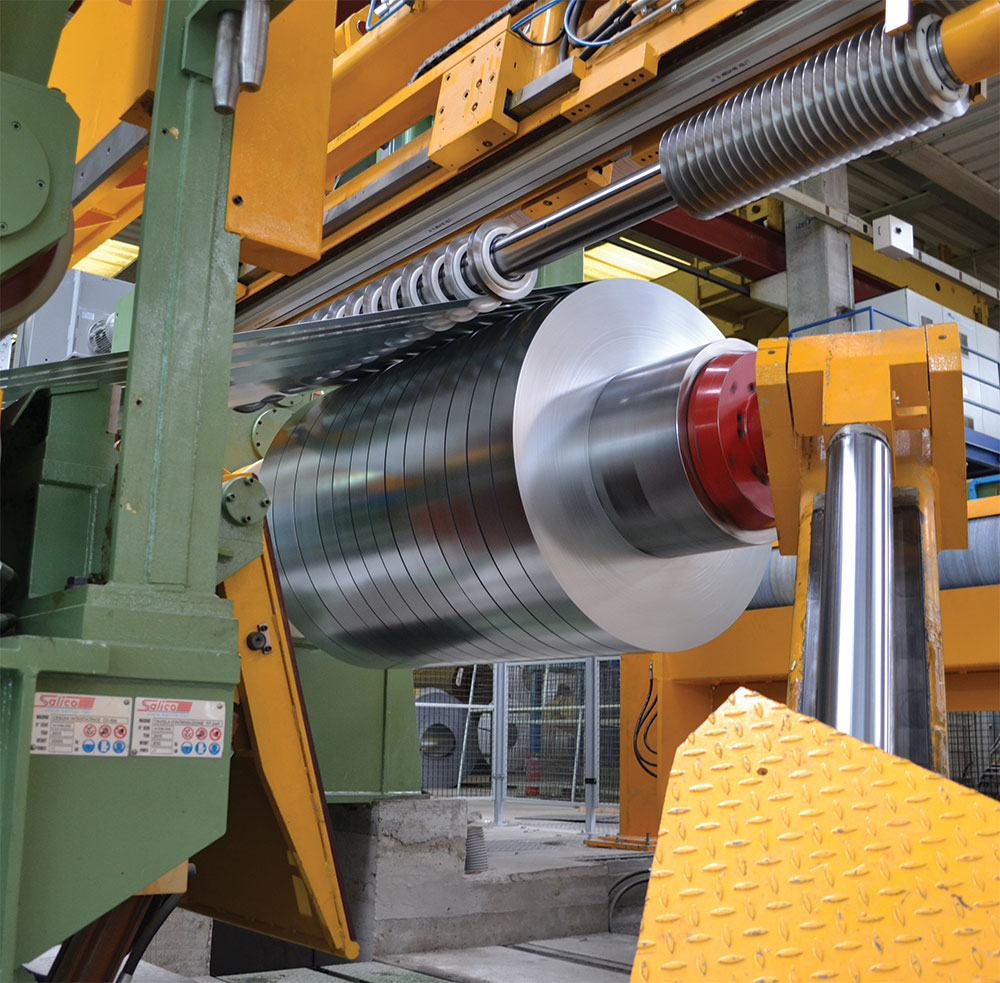smattering of steel and aluminum manufacturers around the world have stealthily become integrated producers—not only by owning scrapyards and downstream fabrication companies but also by bringing high-volume metal processing lines in house. They are relying on full-service machinery builders like SES-Salico to achieve that.
SES-Salico is a joint venture between SES LLC, Alliance, Ohio, and Salico Group, Molteno, Italy, that formed in 2015. Founded in 1976, SES specializes in heavy-duty mill equipment, including melt shop components, transfer cars, slab and coil handling, long product handling and processing lines. Salico Group, established in 1978, builds slitting, cut-to-length, leveling, blanking and packaging lines.
Cesar Martin, technical operations manager, and Daniel Cullen, manager of sales and service, discuss how the collaboration has delivered value to customers.
“Our lines are predominantly on the heavier side, and we manage heavier material handling from melt shop to hot mill to cold mill,” Cullen says. SES has long built its expertise within mill environments while Salico specializes in equipment for processors.
SES has nearly 50 engineers on staff. With the SES-Salico joint venture, the Italian company now has a U.S. partner with a solid domestic footprint and that can service existing lines, rebuild machinery, and engineer and manufacture new components.

Salico has built three processing lines for an aluminum mill in Tennessee. “We supplied two side-trimming and center-cut lines and one coil inspection line,” says Martin. The mill automated inspection on the side-trimming line. Because the material goes to automotive customers, “they must look for the smallest defect.”
The lines Salico built include coil thickness gauges, leveling, marking and dry coating functions. “They have all the bells and whistles. These lines are bringing back—in house to the mill—processing that they were outsourcing. They are saving a bunch of money on service and logistics and can control quality in a more agile way, detecting defects much earlier in the process,” Martin explains.
More producers are considering installing processing lines within their mills, says Cullen. “At SES, we are in the mills every week. We understand all the mill requirements. Outside processors don’t like to hear when the mill puts a line in. The mills, however, love it,” he notes.
Capital spending decisions are largely “driven by price. [Clients] don’t want to spend a lot on engineering and they want to keep costs low. But we will bring years of advancement to a line, which now competes with a line the customer may have bought in 1995.” The customer will be able to tell immediately which one performs best.
When the two companies performed their due diligence before the 2015 merger, “it was fascinating to see what Salico has and what was normal in the EU market. We wondered, why wouldn’t we do that?”
For example, “we are seeing a lot of interest in automation,” which is more common at European metals factories, “It’s already developed and in service. These are not theories.”
The way the market works in Europe, says Martin, is “we take for granted that each line is tailor made.” Salico does leverage existing developments but “no line is typical.”
Martin previously worked with a drives and controls/automation giant that tried to standardize its PLCs and drives. “In a way, they asked us to have line types A, B and C and be ‘flexible’ enough to allow customers to decide on the color. That wasn’t really helping our customer because each wants an individual solution and for us to be more flexible.”
 [the u.s. is] just getting into robot knife changers but europe is probably on the third generation.
[the u.s. is] just getting into robot knife changers but europe is probably on the third generation. 
“Another driving force for us is that safety requirements in Europe have been stringent for a long time, which led the market to develop certain automation solutions to provide greater safety—but without handicapping the productivity.”
Automation also reduces or eliminates errors that manual operation can bring. “Approximately 5 percent of setups may contain an error,” Martin says. “That means one has to strip that piece out of the slitter head; it means scrapped material and down time. Automating that reduces workload and the number of operators you need,” lowering the cost of production.
Martin concedes that automation can add significantly to the cost of a new slitter but it will become standard, he predicts. Interest is growing among the top tier of U.S. processors and service centers in the U.S. Eventually, “that will cascade from the top customers down to [mid-size] processors and service centers. We are getting inquiries from U.S. customers. It starts with the top of the class.”
Automating metal processing lines “is almost a paradigm shift” for some potential buyers, Cullen says. “They’re having a hard time figuring out how they would implement the robotic aspects. They can’t always visualize it.”
But across the Atlantic Ocean, he says, “there have been multiple generations of robot knife changers. People here are just starting to get into that but Europe is probably on the third generation.”
In the recent past, perhaps 1 percent of the lines were automated globally, says Martin. Now, 70 percent of the new lines have automated separators, and over 40 percent have automated loading of slitter heads. “That rate is still going up. The benefits are there and customers realize it.”
SES-Salico is aiming to move a piece of the setup into position in a mere 12 seconds, says Martin. With that kind of potential productivity gain, says Cullen, “we are trying to get past where everyone is now.”
The ease of use is going to be key. The machine operator can input instructions such as how many cuts and the width of each cut, or these instructions can just be fed directly from other departments, like IT. “In the time you take to load the next coil, the computer has done the setup. Productivity goes up exponentially,” he says.
SES LLC, Alliance, Ohio, 330/821-3322, seseng.com.